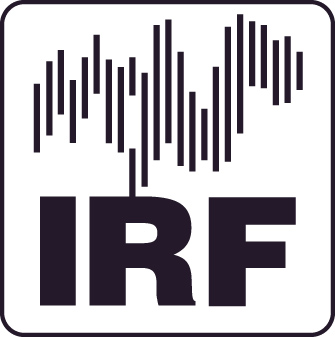

|
| Overview | ||||||
| Topical | ||||||
| Popular Science | ||||||
| Research | ||||||
|
||||||
| Observatory | ||||||
| Data | ||||||
| SEARCH | ||||||
| | ||||||
| IRF Kiruna | ||||||
| IRF Umeå | ||||||
| IRF Uppsala | ||||||
| IRF Lund | ||||||
|
MAP 
|
||||||
|
|

| |||||||||||||||
|
KIMRA is a millimeter wave radiometer at the Swedish Institute of Space Physics, Kiruna, Sweden. The location of the instrument (67.8 N, 20.4 E) allows continuous observation of the evolution of ozone and ozone loss related trace gases in the Arctic polar stratosphere. It is designed for measurements of thermal emission lines between 195 and 233 GHz. Observation of stratospheric ozone and mesospheric carbon monoxide is performed continuously. Signatures of chlorine monoxide, nitrous oxide, and nitric acid are also located in this frequency range. However, due to instrumental effects these signatures are impossible to resolve with KIMRA. From the measurements profiles between 15 and 60 km altitude can be retrieved.
Objectives:
1. Investigation of trace gas constituents in the stratosphere. Ozone
and gases related to the ozone chemistry are the main focus of this
research.
2. Monitoring of the annual Arctic ozone depletion and the interannual
variation of stratospheric ozone.
3. Investigation of the winterly chlorine activation and the trend in
the stratospheric chlorine loading.
4. Contribution to validation of trace gas measurements performed on
international satellite platforms.
Researchers: The microwave radiometer is a project in co-operation with the Institute of Meteorology and Climate Research, Forschungszentrum Karlsruhe/Universität Karlsruhe, Germany. Scientists involved are Gerd Hochschild, Jochen Gross and Uwe Raffalski.
Responsible scientist:Uwe Raffalski
In February 2002 KIMRA started continuous ozone observation at the Swedish Institute of Space Physics, Kiruna. The goal of this project is the investigation of ozone in the Arctic stratosphere.
The objectives are:
- Investigation of stratospheric ozone between 20 and 60 km at high
latitudes and its dependence on the polar atmospheric circulation .
- Application of ground-based microwave radiometry methods for validation
of satellite measurements (Odin, SAGE III, GOME) of vertical
distribution of ozone.
Responsible scientist:Uwe Raffalski
The FTIR (Fourier Transform Infra-Red) spectrometer (BRUKER 120
HR) is operated by IRF Kiruna in collaboration with the Institut
für Meteorologie und Klimaforschung in Karlsruhe, Germany,
and the Solar Terrestrial Environment Laboratory in Nagoya, Japan.
Solar and lunar absorption spectra are recorded throughout the year
and cover the spectral interval from 600 to 5000 cm-1 (2 to 17 µm)
in the middle infrared. Total column amounts of the following species
are retrieved: O3 (ozone, 4 isotopomers), ClONO2, HNO3, HCl, CFC-12,
CFC-22, NO2, N2O, NO, HF, C2H2, C2H4, C2H6, CH4, CO, COF2, H2O (4
isotopomers), HCN, HO2NO2, NB, CO2, and OCS.
Selected research topics and activities:
- chemical ozone depletion by observation of key species: O3, ClONO2,
HNO3, HCl, NO2...;
- profile retrieval to detect dynamical changes;
- transport studies of chemical tracers;
- satellite validation (ILAS and CRISTA instruments);
- details of the ozone formation process by isotopic studies in
ozone;
- water vapour isotopic studies.
Scientist in charge: Uwe Raffalski
Details: http://www.irf.se/link/FTIR